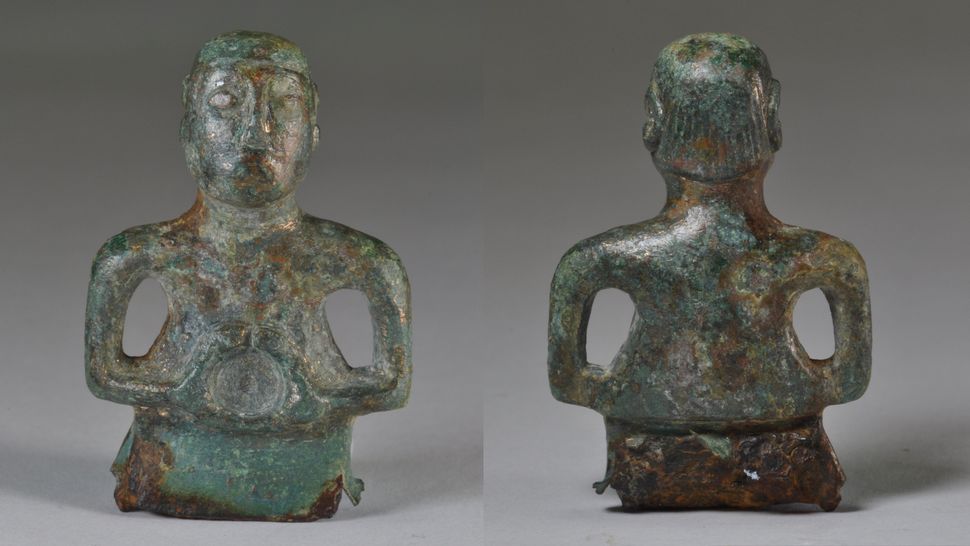Celtic god or 1980s hockey player? Ancient deity statue wears a mullet and mustache [View all]
By Mindy Weisberger - Senior Writer 4 days ago
Business in the front, party in the back.

Two views of the restored copper statue show its fashionable hairstyle. (Image credit: National Trust/Oxford Archaeology East/James Fairbairn)
A tiny statue of a Celtic deity dating to the Iron Age wears a haircut that was widespread — and widely mocked — decades ago, but is now enjoying an unexpected comeback: the mullet.
Worn with the hair cut short in front and long at the back of the head, mullets surged in popularity during the 1980s. Archaeologists recently discovered the same hairstyle on a copper figure measuring about 2 inches (5 centimeters) high, found in an Iron Age site in Cambridgeshire, England, and dating to the first century A.D.
Like countless soccer players, hockey stars, rock musicians and mallgoers that came thousands of years later, the statue's hair is cropped close to its head around the crown and flows long down its back, representatives of the National Trust in the United Kingdom said in a statement. Also like many male mullet-wearers from the 1980s, the statue sports a tiny mustache.
In 2018, archaeologists began excavating a site at Cambridgeshire's Wimpole Estate, uncovering a rural settlement spanning several centuries — from the late Iron Age, beginning around the first century B.C., to the early Roman period. In addition to the statue, they found about 300 metal objects, including fittings from a Roman military uniform; cosmetic tools; coins and nails; and fittings for horse harnesses.
More:
https://www.livescience.com/celtic-deity-statue-mullet.html?utm_source=Selligent&utm_medium=email&utm_campaign=LSA_Newsletter&utm_content=LSA_Newsletter+&utm_term=3403514

